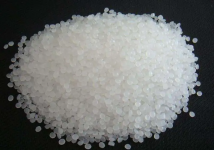read: 942 time:2025-06-19 23:39:46 from:化易天下
When it comes to molecular biology, one of the most essential techniques is DNA extraction. One of the widely used methods for this process involves the use of phenol and chloroform. In this article, we will delve into why phenol chloroform is used to DNA extraction, exploring the specific roles these chemicals play, and how they contribute to efficient and clean DNA isolation.
Phenol, an organic solvent, is a key component in DNA extraction. Its primary role is to help denature and remove proteins from the cell lysate, which contains the DNA. When cells are lysed (broken open), a mixture of proteins, lipids, and nucleic acids is released. These proteins can interfere with downstream applications, so it's crucial to separate them from the nucleic acids.
Phenol is effective because it disrupts the hydrogen bonds that stabilize proteins, denaturing them and rendering them insoluble in the aqueous phase. This denaturation causes the proteins to move into the organic phase when mixed with chloroform, leaving behind the nucleic acids (DNA and RNA) in the aqueous phase. Thus, the use of phenol helps purify the DNA by removing these unwanted proteins efficiently.
Chloroform, another organic solvent, works synergistically with phenol in the DNA extraction process. It plays a crucial role in improving the separation between the aqueous phase (which contains the DNA) and the organic phase (which contains the denatured proteins and lipids). Chloroform enhances the efficiency of phase separation due to its density and immiscibility with water.
In a phenol-chloroform extraction, the addition of chloroform increases the clarity of the interface between the aqueous and organic phases, making it easier to recover the DNA-containing layer without contamination from proteins or other cellular debris. Without chloroform, the phases may not separate as cleanly, leading to less pure DNA.
The combination of phenol and chloroform in DNA extraction has been proven to be effective for several reasons. First, the phenol ensures that proteins are thoroughly denatured and segregated from the DNA. Second, the chloroform aids in creating a distinct separation between the two phases, ensuring that the aqueous phase, where the DNA is located, can be easily and efficiently collected. This method consistently provides high yields of pure DNA, which is essential for downstream applications like PCR, sequencing, and cloning.
Moreover, the phenol-chloroform extraction method is highly versatile and can be used for different types of cells and tissues, making it a standard procedure in many molecular biology labs. Its ability to consistently produce high-quality DNA, free from protein contamination, is why phenol chloroform is used to DNA extraction across various research and clinical settings.
One of the primary advantages of using phenol and chloroform for DNA extraction is the high purity of the DNA that can be obtained. The dual solvents effectively remove contaminants that could interfere with subsequent molecular procedures. This level of purity is particularly important when working with sensitive techniques, such as quantitative PCR or genomic sequencing, where even trace amounts of proteins or lipids could skew the results.
Additionally, the phenol-chloroform method is time-tested and widely recognized for its reliability. Though newer methods, such as silica-based column extraction, are gaining popularity for their speed and ease of use, phenol-chloroform remains a gold standard when high-quality DNA is a priority.
In summary, the reason why phenol chloroform is used to DNA extraction lies in the unique properties of these chemicals. Phenol denatures proteins, allowing them to be separated from nucleic acids, while chloroform assists in creating a clear separation between the aqueous and organic phases. Together, they enable the extraction of high-purity DNA that is suitable for various molecular biology applications. Although modern techniques may offer alternative methods, phenol-chloroform extraction remains a reliable and effective choice for researchers seeking optimal DNA quality.
By understanding the detailed function of these reagents in the extraction process, one can appreciate why phenol chloroform is such a valuable tool in the world of DNA extraction.

Jincheng Petrochemical's 300000 ton polypropylene plant successfully trial production, 2024 polypropylene market analysis

The ABS market remains sluggish, what is the future direction?

Market differentiation of bisphenol A intensifies: prices rise in East China, while prices generally decline in other regions

The production method and process flow of silicone acrylic lotion, and what are the common raw materials